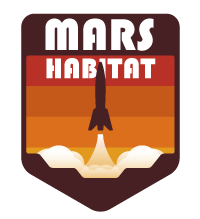
Christoph Keiten & Jan-Peter Franke
A MARS HABITAT
It is the year 2072, since the first habitat on mars was a huge success, the NASA gave permission for more humans on mars. Two more habitats were built, followed by a greenhouse. Since people agree that the mars is not the final destination, the mission is find out how we, as humans are going to be able survive in space and evolve to a multi planet species.
The first mars mission (Pathfinder) landed on the red planet in 2004. More missions like spirit and opportunity, perseverance, curiosity and a few others were successful. The informations and precise data about the surface led to the first human based mars mission in 2035. The search for life on mars has not had any positive results to date. Back then it was unthinkable that people could live from local food, water and oxygen production.
Since the radiation problem was greatly reduced by the plasmashield
invention in 2069, the NASA commissioned the construction of a mars
habitat.
Today 16 people live largely off what is grown on mars. The human species learned how to survive in this harsh conditions. But can newborn people develop, and thrive on mars? At the moment the answer is clearly ,,no`‘. This is because of the different gravity in first place but also because the oppressive experience in a can. That is the reason why the NASA set out to find, reach and colonize a terrestrial planet.
This goal doesn’t seem too far anymore. The distance is huge, but the
mars missions have shown us, how we can autonomous survive in space.


The Process
The habitat will be printed in two layers. The first layer is HDPE. It acts as an inner tube, while the second layer, made of regolith (mars soil), acts as a radiation shield and adds the needed mass and protection.
Local material is used to reduce high transport costs.
The construction is split into three phases:


